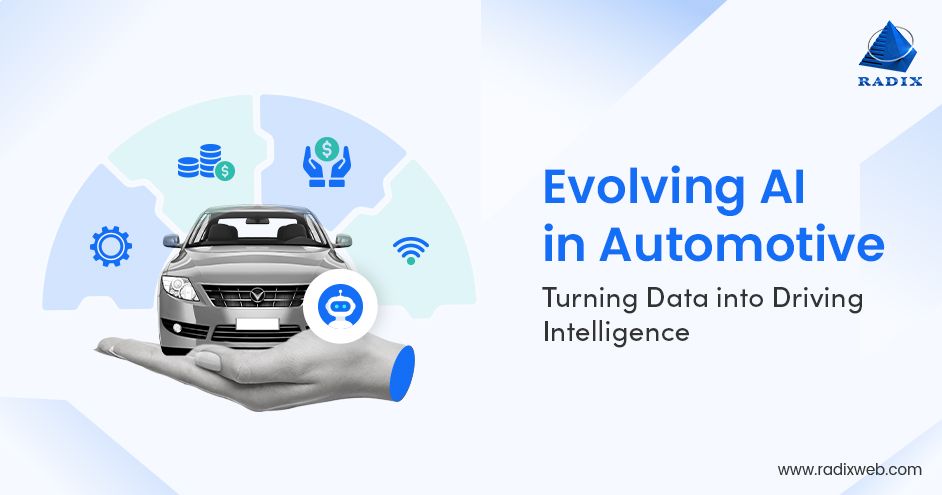
Skip Setup Headaches and Start Your Project Fast - Download Free Boilerplates
8 Easy Steps to Transition from Monolithic to Microservices


Editor’s Note: A monolithic application can be defined in various ways, such as a legacy application or a codebase that has developed organically. It is also possible to characterize it as an application that does not have sufficiently specified domain boundaries or module boundaries.
On the other hand, a microservice architecture makes it possible for businesses to enable the rapid, frequent, and dependable delivery of a wide range of complicated applications through application modernization services. This blog aims at detailing a step-by-step process to migrate your monolith system to a microservices based architecture.
Many businesses all around the world are currently putting their resources into the process of converting their monolithic applications into microservices.
Nevertheless, the process of transforming monolithic applications into microservices is not a simple one to carry out. This is because a microservice architecture encourages the development of an application comprising several different services with different business capabilities. Read on for a step-by-step strategy to transition from monolith to microservices.
On This Page
Problems Associated with Monolithic Applications
Let's look at some of the difficulties that monolithic applications present for businesses, given that we now know that transforming a monolithic application into a microservice is not a straightforward operation.

1. Size and Complexity Constraints
Size and complexity are two factors that severely limit the capabilities of monolithic applications. When an organization wants to make an application bigger, they have to add additional services to it, which causes the application to be more difficult to deploy and run.
2. Poor Scalability
When distinct modules' resource requirements conflict, scaling monolithic applications can be difficult. This is because a number of services make requests for resources related to several other services inside the application. As a result, the engagement of resources, when asked for, does not hinder the scalability of the application.
3. Unreliability
Reliability is one of the most influential aspects driving stakeholders to transition monolithic applications to microservices. For example, the operation of the monolithic application is impeded when there is a defect in the software. In addition to that, the application may provide the same service for multiple instances. If such is the case, the bug will manifest throughout the application.
In light of the drawbacks, you may be interested in learning about the advantages of microservice architecture rather than monolithic applications.
Access Dedicated Migration and Upgradation Services to Accentuate Your Tech Capabilities
Start Now
Advantages of Utilizing Microservices

When you convert a monolith to microservices, the microservice architecture overcomes the challenges posed by the complexity of a monolithic application by breaking down the application into a collection of services that can be easily managed. These services can be developed more quickly and are simpler to comprehend, making them easier to use and requiring less effort to keep up. Here are some other advantages/benefits of microservices.
1. Adoption of New Technologies
The utilization of microservice architecture makes the adoption of new technologies easier. This flexibility is made possible by the architecture, which frees developers from being accountable for the decisions made at the outset of the project and allows them to select whatever technologies make the most sense for the service they are developing.
2. Independent Deployment
Businesses are given the ability to deploy microservices, thanks to the independent architecture. Because of this, enterprises can now implement continuous deployment practices. Deploying DevOps services further enhances deployment efficiency and accuracy.
3. Better Agility
Any error in an application that uses microservices will only affect the specific service it occurs in and not the overall solution. Therefore, all of the adjustments and trials may be carried out with a reduced risk of failure and a smaller number of mistakes.
Hire Experts with Curated Technical Expertise in Building Comprehensive DevOps Solutions and Service Implementations
Get Started
8 Steps of an Effective Monolithic to Microservices Migration Strategy
Since we are now aware of the disadvantages of monolithic applications as well as the advantages of adopting a microservice architecture for the same applications, Now let's have a look at the steps involved in a monolithic to microservices migration strategy:
1. Identifying the Logical Component
When it comes to the data that is used by the system, there are three key components:
- Data objects
- Actions based on data
- The task at hand and possible applications
Data objects constitute the logical structure of the data that is being used in the system. The commands used to carry out a task on one or more data objects, maybe even on various kinds of data, are called data actions. Whereas the job to execute refers to the function being called to carry out a task using the data that is now available.
When integrating the multiple systems into a single strategy, it is necessary to determine all three components—data objects, data actions, and jobs to be carried out for each system—before beginning the integration process. These components are implemented within the codebase itself as separate modules. Once these components have been identified, the system architects will be able to establish the operations to be carried out on the data sets that will be useful in the subsequent phases of the application.
2. Flatten or Refractor the Components
After individually identifying and classifying each module and component, the businesses are responsible for organizing these groups within the company. Before beginning to construct the microservice architecture, it is necessary to address the components with functionalities comparable to one another. There can only be one microservice that does a certain task.
3. Determine Which Components are Dependent on Others
The system architects need to first identify and reorganise the components of the application, and then they need to determine the dependencies between the components before they can successfully migrate from a monolithic application to microservices. This task can be accomplished by architects through the utilisation of static analysis of the source code in order to search for calls between the numerous libraries and datatypes.
4. Identifying the Components in Their Groups
After the components and their interconnections have been mapped out, the next step for the architects is to organize the components into cohesive groupings that have the potential to develop into microservices or, at the very least, microservices. Nevertheless, making a distinction between microservices and microservices is unnecessary at this stage. During this stage, you will search for a select group of objects and the activities that make them up that should be logically partitioned into different parts of the final system.
Enrich Your Enterprise Applications with the Power of Microservices
Begin Here
5. APIs for the Remote User Interface
The only way for the system, its components, and the people who utilize it to communicate is through the remote user interface. The remote user interface needs scalability to incorporate newly developed functions, and technologies as the system develops over time.
The interface needs to be functional not only after the microservice has been deployed but also while it is being migrated. When the system was transferred from a monolithic to a microservices architecture, the remote user interface was required to alter the data because it was expected that the components would change as they were worked on.
Read More: Microservices vs API: A Comparing and Contrasting Guide
This stage aims to create a single application programming interface (API), which the user will use to interact with the system and alter the data. Simply put, the remote user interface serves as a communication hub for the user, the machines, and the data. This application programming interface (API) is the foundation for everything else.
As a result, it must be built and constructed in such a way as to guarantee that the present data interactions will not be drastically altered. Instead, it should be flexible enough to incorporate newly discovered data sets, functionalities, objects, attributes, and actions as soon as they are made accessible. Scalability is the key.
After the application programming interface (API) layer has been implemented, any new functionality should be provided using the API rather than the legacy applications.

6. Migrate the Components to the Macroservice
Microservices have a more laid-back approach to sharing data repositories and permit more intricate interactions between data objects. Because of this, it is recommended that you carry out this step as an intermediate process while migrating your monolithic application to microservices.
The complexity of monolithic applications, which may have been created utilizing interconnected logic that may pose challenges when converting to microservices, is the primary reason for the company's decision not to move to microservices.
This stage aims to transfer the components to individual projects and set up separate deployments for each of those projects. At the very least, each microservice must be independently deployed from within the system's continuous integration (CI) and continuous deployment (CD) pipeline.
7. Migrate from the Macroservice to the Microservice
After moving the components of a monolithic application to a macroservice, grouping them together, and organising them, the system architects will need to transition these components of the application from the macroservice to the microservice level. Because using a macroservice as an interim procedure makes the transfer simple and quick, it also provides insight into how these components might be further separated into microservices.
8. Deployment and Testing of the System
When a microservice has reached the point where it is ready to be deployed, the following steps are integration testing and deployment. The monolithic system must be configured to use the new service rather than its inherited data store to satisfy its data requirements.
It can be difficult to locate all calls to the datastore from within the monolithic legacy system. In a setting dedicated to testing, it may be feasible to get rid of the legacy data associated with the migrated datasets that the new microservice is in charge of managing.
In SummationThe world's businesses are currently competing to modernize their outmoded systems and infrastructure to circumvent the systems presented by legacy information technology. Because these systems are at the heart of an organization's ability to expand, ensuring they are always up to date is of the utmost significance.And what could be more ideal than a flawless strategy and road map that will assist you in modernizing your legacy systems with the most cutting-edge technologies currently available? Get in touch with us so that we can provide you with a failproof assessment and strategy for transitioning your monolithic application to a microservice architecture.
Ready to brush up on something new? We've got more to read right this way.





